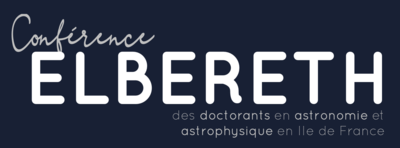Orateur
Description
The James Webb Space Telescope is poised to revolutionize many fields of astrophysics. One such field is planetary science in our own Solar System.
JWST will be able to study planetary atmospheres and small bodies in the infrared spectrum (from 1 to 27 microns). In the case of Solar System planets, this presents an amount of added difficulties, such as the brightness or extent of the planet compared to the sensitivity, saturation limit and FOV of the instruments.
In this presentation we will present the main objectives of the Early Release Science 1373 project, which addresses the study of the Jovian system (Jupiter, its rings, Ganymede and Io). In the PhD I will focus on the study of Jupiter. The ERS 1373 plans to study the Great Red Spot and south polar regions, in order to study the dynamics and chemistry on these zones. Also, we expect to find significant differences in the abundances of chemical species in both regions, due to the impact of the ionical chemistry, that could be happening in the polar regions due to aurorae precipitations.
In order to test the capabilities that JWST can implement on the study of Jupiter’s atmosphere, a simulation of the behaviour of the instruments is needed. Then we can check the SNR, spatial and spectral resolution, emission lines that can be retrieved... while we wait the data to be ready.
Radiative transfer and inversion techniques codes will be used to retrieve the temperature and its variations, as well as the distribution of various chemical species present in the atmosphere of the planet, all this thanks to the data from MIRI, onboard JWST. In parallel, we intend to study the polar dynamics with NIRCam in search of possible couplings between wind and temperature fields or abundances by using cloud tracking-correlation methods to retrieve the wind fields of the planet.
Day constaints
23 and 24 of March.
| Field | Planetology (including small bodies and exoplanets) |
|---|

